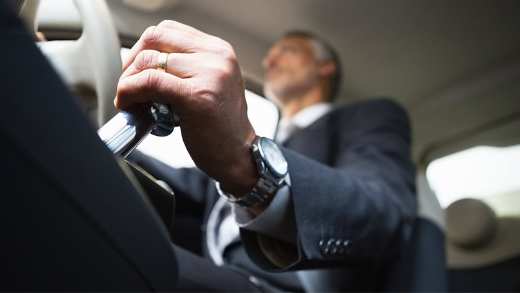Manual vs automatic cars: which are better?
The main difference between an automatic car and a manual car is that a manual has three pedals.

Arguing about whether automatic or manual cars are better is like debating mp3 players vs vinyl. We cut through the noise and asked the experts which is best.
When it comes to your choice of vehicle, getting the decision right is a little more important than worrying about whether you lost some audio quality.
Manual cars
When you drive, for your car's engine to work efficiently it needs to change gears to accommodate your speed. As you drive faster, you move into a higher gear. This is true of both manual and automatic cars.
The main difference between an automatic car and a manual car is that a manual has three pedals – the brake, the accelerator, and the clutch. The driver presses the clutch while manually changing gears using the gearbox. Automatic cars change gears, too, but they do it (you guessed it!) automatically.
Manual cars are still the most common type of car in the UK, especially when it comes to smaller cars – though automatics are rising dramatically in popularity, according to Phill Tromans, freelance motoring journalist. “Manual cars are definitely scarcer now than in recent years, especially with the increased popularity of hybrid and electric cars, which are all essentially automatic.
“Nevertheless, I'd advise people to learn in a manual if they can. While the number of cars on the road with manual gearboxes is declining, many used cars – especially smaller vehicles – still use them. If you're qualified to drive a manual then you can drive an automatic too, but that doesn't work the other way around Footnote [1].
It used to be common knowledge that manual cars were cheaper and more fuel-efficient. However, this isn’t necessarily true today. “Many modern cars are only available with automatic gearboxes, but plenty of models feature a choice between manual and automatic. Some autos are more efficient than an equivalent manual car, and some aren't” says Phill.
These days, manual gearboxes are also sometimes associated with high performance or luxury vehicles. But Phill doesn’t believe that manual cars are particularly higher performing than automatics. “It depends on the car,” he says.
And in terms of driver performance? “What gearbox you use has no impact on how good or bad a driver you are. Many people just enjoy having more mechanical involvement in their driving. Basically, it all boils down to what you feel the most comfortable with. While I’d recommend passing your test in a manual if you can, because it gives you options in the future, there’s no right or wrong – it depends on what kind of car you want and what kind of driving you’ll be doing.”
Automatic cars
An automatic car typically has four modes: Park (P), Reverse (R), Neutral (N), and Drive (D). Since you don’t need to change gears, there’s no clutch – just the brake and the accelerator. That means you essentially only need to think about whether you’re going forward, backward, or stopping – the car will decide the rest.
You cannot stall in an automatic car, since you don’t need to choose a gear and use the clutch. So if you’re driving in heavy traffic or other difficult conditions, an automatic might be the way to go.
“For motorway slogs, or if you want to make driving as easy as possible, then automatics can seem a preferable choice,” agrees Phill. “But they can sometimes cost more to buy and be more complicated to repair if anything goes wrong.”
Although automatic transmissions are less likely to fail because the gears shift more smoothly, when they do fail, the fix can potentially be more expensive. But it’s not all bad news. According to Martin Smith, our Motor Technical Claims Manager, “There’s a common misconception that all automatics, generally speaking, cost more than manuals to insure. Automatics are becoming more and more commonplace, and the cost of the technology is coming down.”
Martin explains that every new car gets a rating from the Association of British Insurers (ABI), which is based on extensive research into its safety and performance. This is bundled into factors about individuals’ driving history, information about where they live, and so much more to calculate that driver's premium. “The transmission type will be one small factor in the rating.”
The cars of the future
Martin says that, in time, automatics will probably dominate – but this change will probably be slow. “Unless you’re only ever going to own or drive new vehicles (lucky you) throughout your driving career, electing to take an auto test rather than a manual might limit your vehicle choice.” But still, automatics are becoming more and more commonplace, so they’re now as efficient as a manual and don’t cost significantly more.
“When we look at hybrid cars, you’ll find that tech doesn’t work with a manual because the car needs to be in control of the speed range,” says Martin. “In 2, 3, 4 years’ time when we get to the first cars which are capable of conditional automated driving, they will be automatics – because there won’t be anyone to change the gears.”
It's hard to predict exactly what driving will look like in the future, but one things for sure: electric vehicles are here to stay.
Find out more about electric vehicles and the cars of the future



